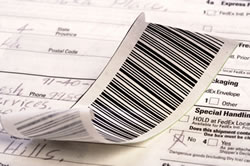 Fast business processes, information management excellence and ECM maturity define how successful organizations are in today’s information-driven economy.
Fast business processes, information management excellence and ECM maturity define how successful organizations are in today’s information-driven economy.
Information capture is where it all begins, including the capture of paper and hard copy documents (document capture). The faster, more accurate and more secure the information flows from paper into processes, ECM systems and other information management systems or LOB apps that are connected with the capture solution or have it embedded, the faster and better the outcomes.
Document capture and scanning have moved from the once dominant centralized approach to a decentralized or distributed capture model for multiple reasons. This way, capture has extended its reach, enabling higher efficiency and meeting the needs for speed and increasingly decentralized organizations. With web-based capture, capture in/to the cloud, mobile capture, distributed scanning and ubiquitous cross-device capture, the benefits of a decentralized approach are further enhanced.
Why distributed capture?
The benefits of a decentralized, distributed capture and document scanning approach are numerous. They include:
- The possibility to capture closer to the source and the customer, speeding up processes, improving security and accuracy and enhancing customer experience.
- Cost reductions as documents don’t need to be transported or mailed to a central location, further enhancing security and accuracy as documents don’t get lost or damaged during transport.
- A better match for increasingly decentralized business, work environments and business processes/functions where speed is essential.
- Enhanced knowledge worker productivity and less time and costs wasted to find information as workers can capture the documents they get and need in the scope of their responsibilities and are closer to the digitized content they require to do their work.
- A further removal of paper which continues to slow processes through a rapid digitization across decentralized locations and stakeholders.
Forms of decentralized/distributed capture
Distributed capture is evolving and new solutions push it towards a more ubiquitous capture approach. Some forms of decentralized capture in this evolution.
Web-based capture – scanning with a browser and capture through a connected LOB application
Web-based capture, sometimes referred to as cloud capture or thin client capture, is one form of distributed capture, offering additional benefits – certainly as in recent years the technologies have matured and early hurdles have been overcome.
With the arrival of specifically designed document scanners for web-based and knowledge workers and the advent of better web-based document capture software (browser-based and embedded into line-of-business applications), demand is growing, making web-based capture catch up with the reality of the online workplace and the move of back-end systems and ECM to the cloud and SaaS set-ups.
Additional benefits of web-based capture:
- Browser-based capture means no software needs to be installed on computers and thus enables connecting each workstation to the scanning solution.
- Browser-based capture enables tapping fully into the potential of distributed capture, among others by simplifying the infrastructure.
- Web-based apps can be deployed fast and cheap while allowing central management by IT, making it easier and faster to deploy software updates, standardize processes, control regulatory compliance and enhance security (e.g. user profiles, audit trails,…).
While web-based capture already makes it easier to get workers trained and started, leveraging the ease of use of web applications, implementing the browser-based capture into line-of-business applications makes it all even easier:
- Users can stay within their well-known LOB applications without ever needing to learn a new application (the capture software) as everything is typically set up with just a scan button that appears right in the application.
- Applications that are part of the overall capture process (which consists of several stages) such as indexing (for instance, OCR) can be managed centrally and move to cloud providers if desired, offering all the known benefits of the cloud and regardless of the cloud deployment mechanism (public, hybrid,…).
Mobile capture – instant information to feed workflows and capture in the field
Saying that it’s a mobile world is probably obvious and at the same time a serious understatement. Once dubbed the Swiss knives of the digital world, smart mobile devices have become our companions in a mobile-first age and we use them for numerous reasons and each single day, with some exceptions.
Mobile has deeply impacted how we live and of course how we communicate and work, with a clear role for the use of mobile for information access, collaboration, capture/creation and the use of file Sync and Share applications.
The impact of the consumerization of IT and BYOD on the workplace and worker demands is well-known and documented. It’s been going on for years. Many systems to enter and access information have gone mainstream since several years as well. Just think about mobile CRM, one of the earliest mobile applications to be embraced and essentially revolving around customer data and information.
Mobile also started entering the ECM and information management space, with a focus on business processes, also driving mobile capture which, as another form of decentralized capture, is coming of age with new smart apps and, more importantly, several use cases where mobile capture enhances productivity and efficiency, while offering all the benefits of distributed and web-based/cloud capture with the additional bonus of immediacy and ubiquity. Combine the cloud (and Web) with mobile technologies and devices and you can take distributed capture another step further.
Mobile is driven by workers. From a capture perspective, however, there is a demand for mobile based upon specific use cases and the growth is very variable, depending on these use cases and thus vertical industries.
Mobile capture can be used in both a push and pull approach. Two examples to clarify the difference:
- One of your workers in the field (for instance a social worker) gets a notification of a job whereby data needs to be captured. The image goes back into the workflow of the application and also gets stored.
- A field worker (for instance a police officer) identifies something whereby there’s a need to capture information and the captured information starts a workflow, gets filed and is sent to whomever needs it or whatever process.
Ubiquitous/pervasive capture: consolidating capture in a consistent way
With mobile capture we came close to the ubiquity and pervasiveness of capture in this day and age. However, mobile is just part of that evolution.
 As organizations dispose of multiple devices to capture information, including office equipment such as MFPs (Multi-Function Printer) or MFDs (Multi-Function Device) with embedded scanning possibilities, there is a move towards an enablement of these devices and even a shift towards them. Along with ever smarter document scanners, mobile devices and thin clients with web-based scanning features they get integrated into a consistent scanning approach using an encompassing scanning solution.
As organizations dispose of multiple devices to capture information, including office equipment such as MFPs (Multi-Function Printer) or MFDs (Multi-Function Device) with embedded scanning possibilities, there is a move towards an enablement of these devices and even a shift towards them. Along with ever smarter document scanners, mobile devices and thin clients with web-based scanning features they get integrated into a consistent scanning approach using an encompassing scanning solution.
MFPs (or MFDs) have become more powerful, mobile capture is coming of age and the advent of faster, cheaper and smarter document scanners with built-in intelligence and features for specific applications and business functions, focusing on the knowledge worker, has made document capture possible for everyone in a far more ubiquitous way whereby the devices, software and integrations are function of the individual business context or user need.
Images purchased under license from ShutterStock.

